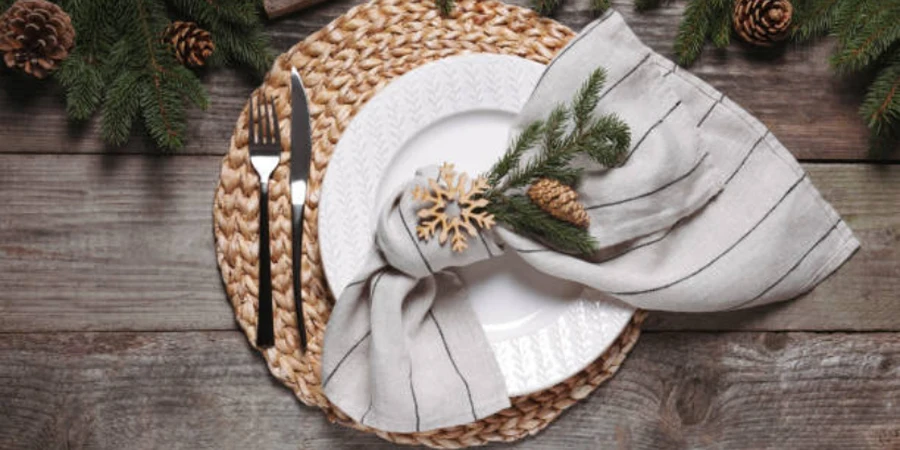In the realm of dining elegance and sustainability, cloth napkins stand as a testament to both form and function. These essential table accessories not only enhance the aesthetic appeal of meal presentations but also reflect a commitment to environmental stewardship. With a variety of materials, designs, and applications, cloth napkins offer a versatile solution to meeting the diverse needs of dining establishments. From everyday meals to special occasions, the right selection of cloth napkins can significantly uplift the dining experience, making them an indispensable part of table setting for businesses aiming to create memorable and sophisticated dining atmospheres. As such, understanding the nuances of cloth napkin selection becomes crucial in curating an experience that resonates with the values and expectations of today’s discerning guests.
Table of Contents
1. Varieties and utilization of cloth napkins
2. Insights into the 2024 cloth napkin market
3. Essential factors in choosing cloth napkins
4. Top cloth napkin choices and their attributes
5. Conclusion
Varieties and utilization of cloth napkins
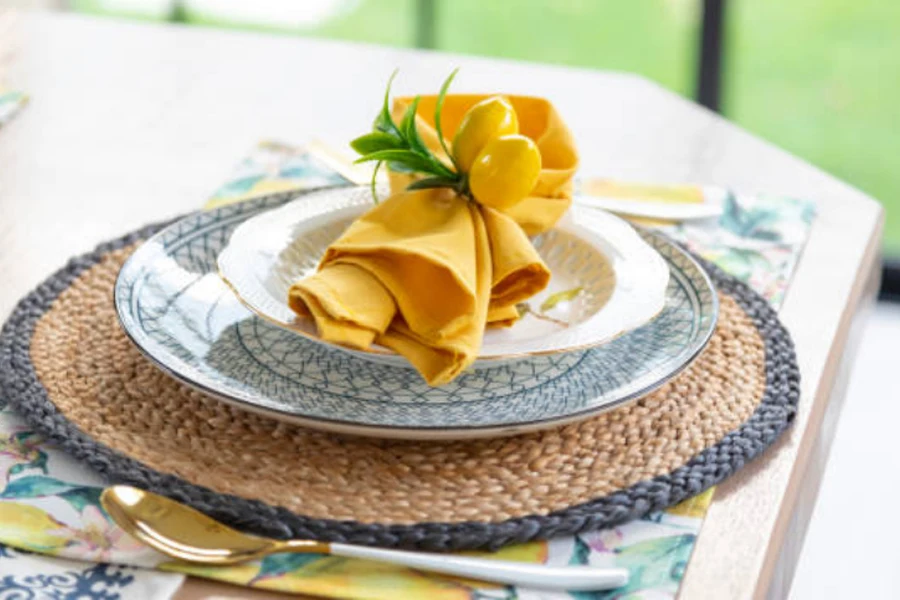
Cloth napkins are serving as a cornerstone in establishing the tone and ambiance of a dining experience, subtly contributing to the overall satisfaction of guests. This choice is deeply influenced by both the material of the napkin and the intended setting of its use, showcasing a blend of practicality and aesthetic appeal.
Different materials for different needs
The material for cloth napkins significantly influences their functionality, durability, and suitability for different settings. Here are the key materials commonly used for cloth napkins, each catering to distinct needs:
Cotton: Known for its softness and absorbency, cotton is a popular choice for everyday use. It’s durable, machine-washable, and comfortable against the skin, making it ideal for both casual dining and formal occasions. Cotton napkins come in a variety of weaves and textures, from crisp and smooth to soft and casual.
Linen: Linen napkins are prized for their elegant appearance and natural sheen. Made from flax fibers, linen is stronger and more durable than cotton, offering a sophisticated touch to formal dining settings. Linen napkins can be more expensive but are valued for their longevity and the luxurious feel they add to table settings. They may require more care, including ironing, to maintain their crisp appearance.

Polyester: Polyester napkins are highly durable, stain-resistant, and easy to care for, making them a favored choice for high-traffic settings such as restaurants and events. They retain color and shape well, resist wrinkling, and are available in a wide range of colors and patterns. While not as soft as natural fibers, polyester napkins offer practicality and longevity for those who prioritize easy maintenance.
Poly-Cotton Blends: Combining the best of both worlds, poly-cotton blends offer the comfort and softness of cotton with the durability and easy care of polyester. These napkins are less prone to wrinkling and shrinking than pure cotton napkins, making them a versatile choice for both everyday dining and special occasions.
Bamboo: Bamboo napkins are an eco-friendly option, made from a renewable resource. They are known for their softness, absorbency, and antibacterial properties. Bamboo fabric is biodegradable, hypoallergenic, and has a minimal environmental impact, appealing to those seeking sustainable dining options.

Hemp: Hemp napkins are another sustainable choice, characterized by their durability and strength. Hemp fabric softens with each wash without losing its integrity, making it suitable for both casual and formal settings. Like bamboo, hemp is environmentally friendly, requiring less water and pesticides to grow than cotton.
Each material offers unique benefits and considerations, from the luxurious feel of linen to the practical durability of polyester and the eco-conscious appeal of bamboo and hemp. The choice depends on the specific needs of the dining occasion, whether prioritizing ease of care, environmental sustainability, or the aesthetic appeal of the table setting.
Usage across settings
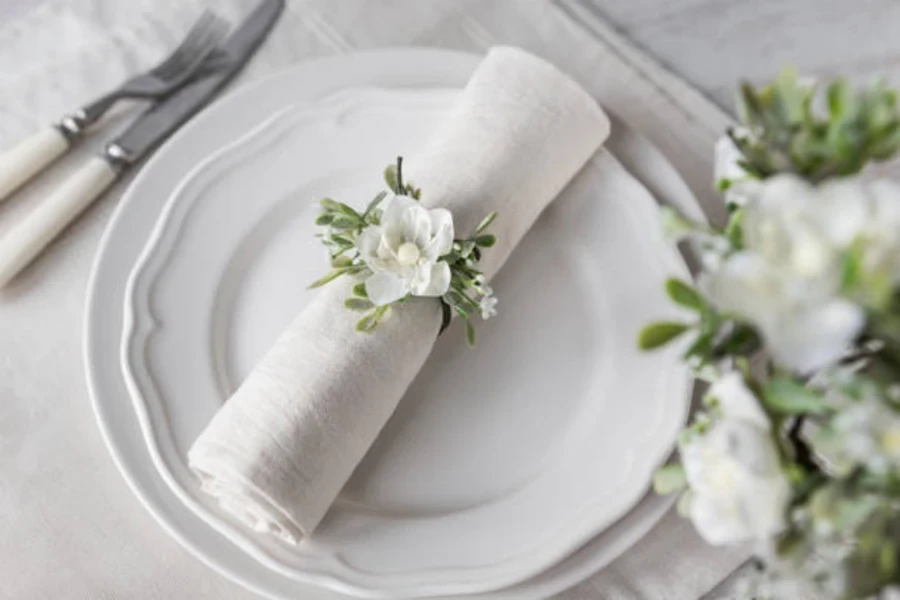
Cloth napkins serve a wide array of purposes across different settings, reflecting both practical utility and aesthetic appeal. Their use extends beyond the mere act of wiping hands and faces; they play a significant role in table decor, environmental sustainability, and enhancing the dining experience. Here’s how cloth napkins are utilized across various settings:
Everyday Dining: In everyday home settings, cloth napkins offer a practical and eco-friendly alternative to paper napkins. They add a touch of elegance to daily meals and are versatile enough to be used for breakfast, lunch, and dinner. Choosing materials like cotton or poly-cotton blends, which are durable and easy to launder, makes them suitable for regular use.
Formal Occasions: For formal dining events, such as weddings, gala dinners, or upscale restaurant settings, cloth napkins made from fine materials like linen or high-quality cotton are preferred for their sophisticated appearance and feel. These occasions often call for napkins that complement the overall decor theme, with colors and folds that enhance the table setting’s elegance.
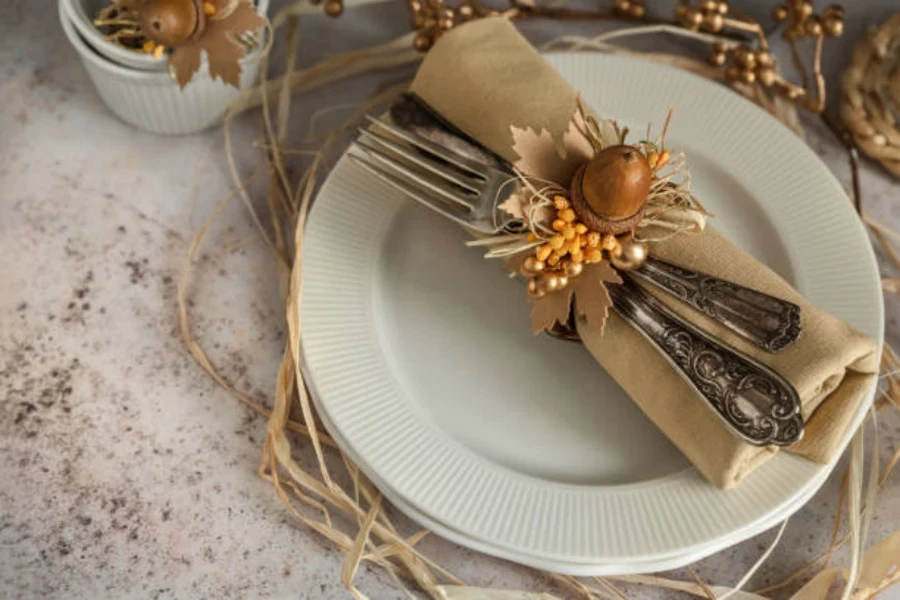
Restaurants and Hospitality: In the hospitality industry, cloth napkins are a staple due to their ability to elevate the dining experience. They signal a commitment to quality and comfort for guests. Depending on the restaurant’s ambiance, the choice of napkin material can range from sturdy polyester for high traffic use to luxurious linen for fine dining establishments.
Events and Catering: For catering events, cloth napkins provide a customizable element that can match or accentuate the event’s theme or color scheme. They are not only functional but also play a crucial role in table presentation, contributing to the event’s overall aesthetic and feel. Durability and ease of maintenance are key considerations, given the large quantities typically required.
Sustainable Practices: Across all settings, the use of cloth napkins aligns with growing environmental concerns, offering a reusable alternative that reduces waste associated with single-use paper products. This usage reflects a broader trend towards sustainability, with individuals and businesses alike seeking ways to minimize their ecological footprint.

Personalized Settings: Cloth napkins also offer an opportunity for personalization, whether through monogramming for a special gift, choosing unique patterns that reflect personal style, or using them as part of a themed table setting for holidays and celebrations. This adaptability makes cloth napkins a versatile choice for adding a personal touch to dining occasions.
Craft and Decoration: Beyond their traditional use, cloth napkins can serve decorative purposes, such as being part of a table centerpiece or used in craft projects. The variety of fabrics, colors, and patterns available allows for creative uses beyond the dining table, showcasing their versatility as a decorative element.
In summary, cloth napkins’ usage spans a broad spectrum, from enhancing the daily dining experience at home to contributing to the ambiance and decor of formal events and establishments. Their role extends beyond functionality to encompass aesthetic appeal, environmental sustainability, and personal expression.
Insights into the 2024 cloth napkin market
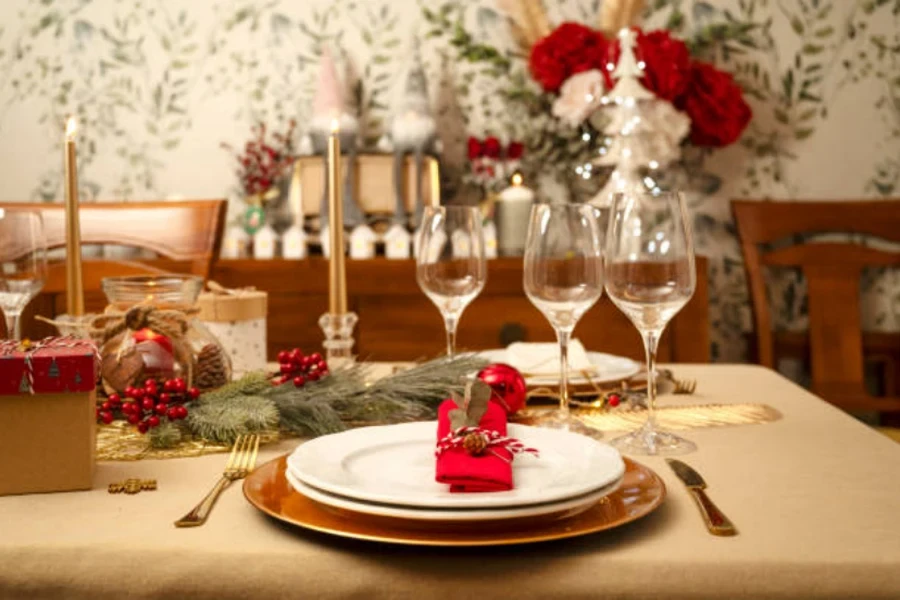
The landscape of the cloth napkin market in 2024 is shaped by evolving consumer preferences and the influence of contemporary design trends. These dynamics are pivotal in guiding businesses in the selection and offering of cloth napkins, ensuring they align with current demands and aesthetic sensibilities.
Trends influencing consumer preferences
Experts currently value the global market for table linen, including cloth napkins at US$ 11.8 billion as of 2022. Anticipated to progress with a compound annual growth rate (CAGR) of 5% from 2023 to 2031, the market is expected to reach US$ 18.2 billion by the end of 2031.
A significant trend steering the market is the escalating demand for sustainable and eco-friendly dining textiles. This shift reflects a broader societal move towards environmental responsibility, with consumers increasingly seeking products that minimize ecological impact. Sustainable materials, such as organic cotton and linen, are at the forefront of this trend, favored for their biodegradable properties and reduced environmental footprint. This growing preference underlines the importance for businesses to prioritize eco-friendly options within their product range, catering to the ethical considerations of their clientele.
Moreover, the emphasis on durability and quality has intensified, with consumers willing to invest in napkins that promise longevity and sustained performance over time. This preference not only underscores the value placed on craftsmanship and material excellence but also highlights a departure from the disposable culture, further aligning with environmental sustainability goals.
Impact of color and design on selection
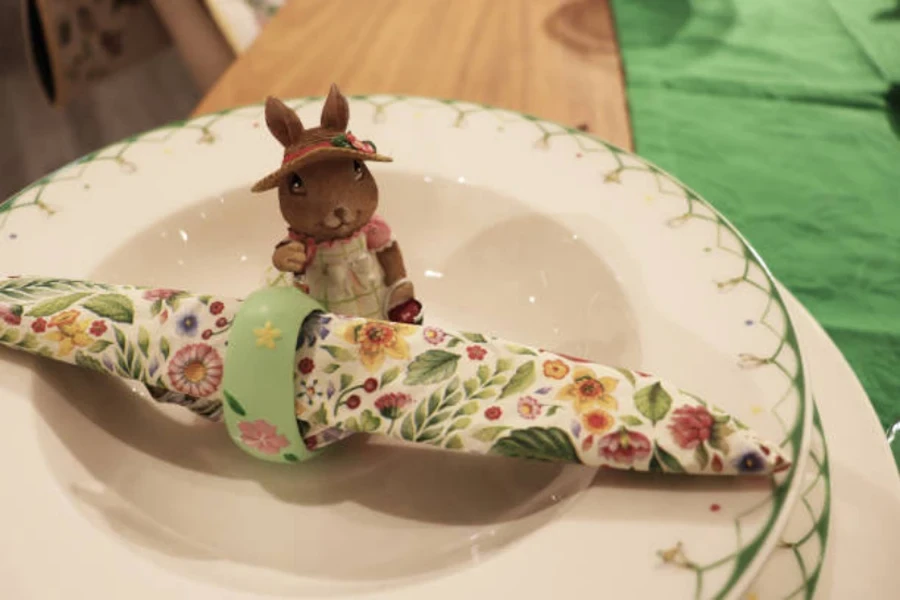
The influence of current fashion and interior design trends on cloth napkin choices cannot be overstated. Color and design play a critical role in the selection process, with trends dictating the palette and patterns that dominate the market. For 2024, there is a noticeable inclination towards bold and vibrant colors, as well as intricate patterns and textures. These preferences mirror a desire for table settings that make a statement and reflect personal style or the thematic essence of dining establishments.
Conversely, there remains a steadfast demand for classic and understated designs, highlighting the enduring appeal of simplicity and elegance in dining textiles. Neutral tones and minimalistic patterns continue to be favored for their versatility and ability to complement a wide range of decor styles. This duality in design preferences showcases the market’s diversity, offering opportunities for businesses to cater to varying tastes and dining concepts.
The insights into the 2024 cloth napkin market reveal a complex interplay of consumer values, from environmental consciousness to aesthetic preferences. These trends provide a roadmap for businesses to navigate the evolving landscape, ensuring their offerings resonate with contemporary demands and stylistic trends. As the market continues to evolve, staying attuned to these shifts will be crucial for businesses aiming to maintain relevance and appeal in the competitive realm of dining elegance.
Essential factors in choosing cloth napkins
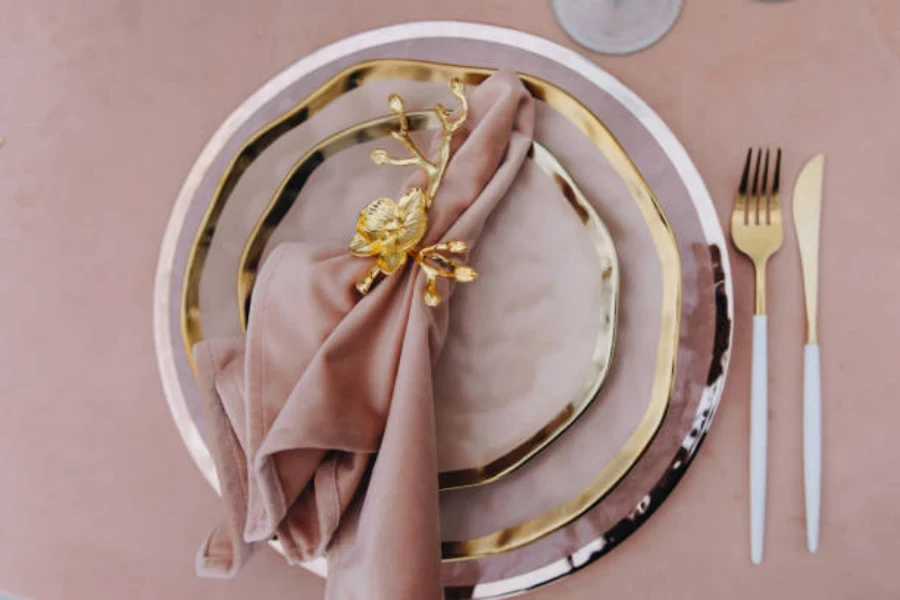
As the market for kitchen and table linens continues to evolve, several pivotal factors come into play for those in the industry making procurement decisions. These factors not only influence the immediate appeal of cloth napkins but also their long-term viability in both residential and commercial settings.
Quality and durability concerns
When considering the essential factors for selecting the right cloth napkins, the quality and durability of the materials stand out as paramount concerns. These aspects directly impact not only the longevity and appearance of the napkins but also the overall dining experience they help to create.
In the realm of cloth napkins, material strength and ease of maintenance are crucial for ensuring that these dining essentials withstand the rigors of frequent use and laundering. High-quality cloth napkins reflect the ambiance and appeal of dining establishments, with durability, resistance to wear, and absorbency being key attributes that determine their suitability for both casual and formal settings.
For instance, the selection process for restaurant napkins in bulk should prioritize fabrics that maintain their integrity and appearance over time. Materials such as linen, known for its strength and elegant texture, offer a high-end feel suitable for formal dining but require more meticulous care to preserve their appearance. In contrast, blends of cotton and polyester provide a more durable and low-maintenance option, capable of enduring frequent washes while retaining their color and shape. These fabrics are particularly favored in settings where practicality and longevity are essential.
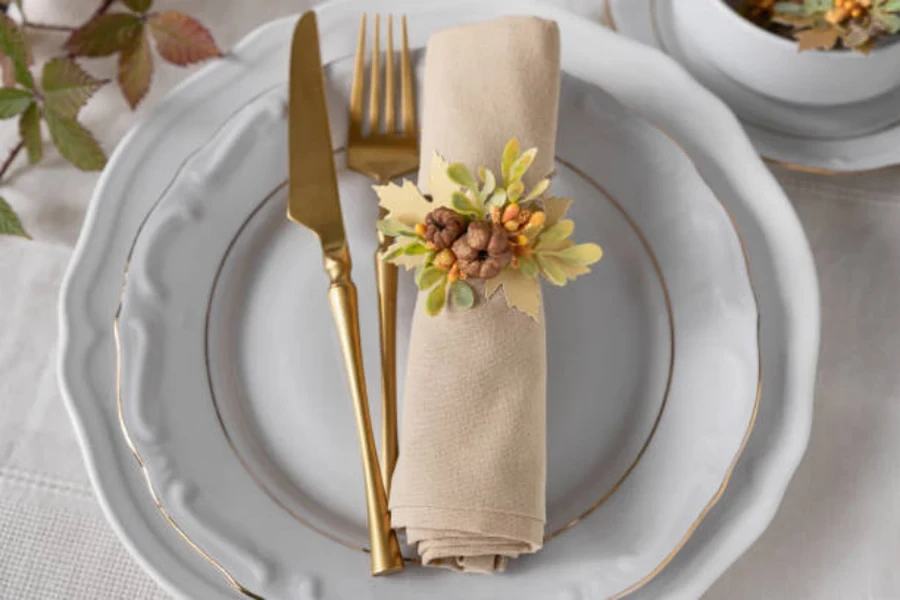
The color choice of napkins also plays a significant role in their maintenance and longevity. While white napkins offer a classic and versatile option, matching most dining environments, they may show stains more readily than darker or patterned fabrics, potentially leading to more frequent replacements. Therefore, selecting napkins with colors that align with the establishment’s theme and practical considerations can significantly impact their durability and maintenance needs.
Moreover, the ease of laundering is a critical factor, with some materials requiring special care to avoid damage during cleaning. Napkins that are easily laundered without requiring extensive ironing or special treatments offer practical benefits, reducing the time and cost associated with their upkeep.
In sum, selecting the right cloth napkins involves a careful balance between aesthetic appeal and practical considerations. Materials that offer durability and ease of maintenance, without compromising on the desired look and feel of the dining experience, are key to making a choice that benefits establishments in the long run. High-quality, durable napkins not only enhance the dining experience but also represent a wise investment, reducing the need for frequent replacements and maintaining an appealing dining atmosphere.
Aesthetic appeal and styling
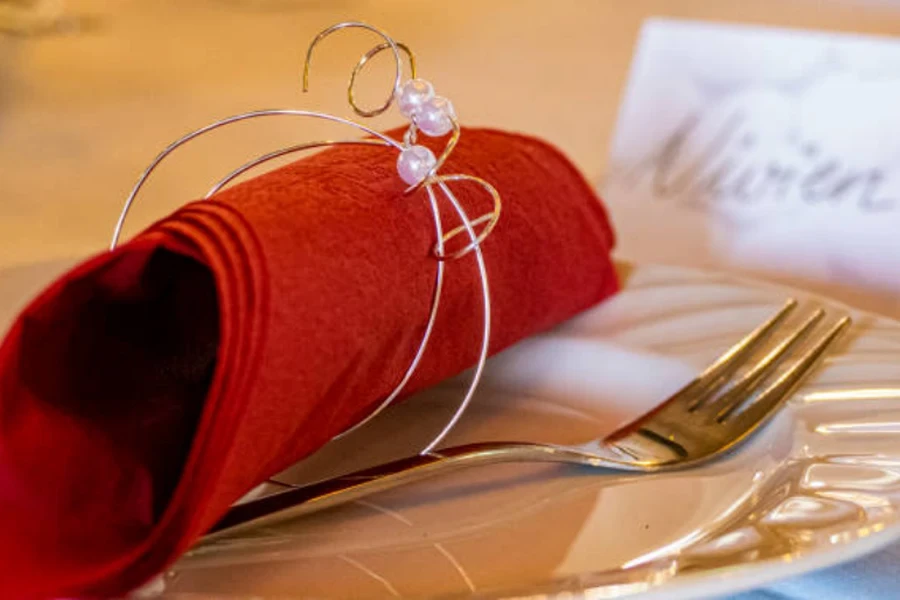
When it comes to enhancing the dining experience, the aesthetic appeal and styling of cloth napkins play a pivotal role in creating cohesive and visually appealing tablescapes. The interplay of napkin and tablecloth colors, textures, and patterns can significantly influence the ambiance of a dining setting, underscoring the importance of thoughtful selection.
Selecting the right combination of tablecloth and napkin colors involves more than just adhering to a specific theme or preference; it’s about ensuring harmony and visual interest at the table. For instance, while an all-white linen setup is timeless and versatile, introducing colors can add depth and character to the dining environment. A sage green napkin paired with a white tablecloth, or an ivory tablecloth complemented by burgundy napkins, can maintain a classy and neutral look while infusing the space with subtle color accents.
However, it’s crucial to avoid monochromatic schemes where napkins and tablecloths are of the same color, as this can lead to a lack of distinction and visual flatness. Instead, contrasting colors can be employed to create visual interest and highlight the table setting. A classic approach involves pairing a neutral base, such as white, black, or ivory, with vibrant accents like green, blue, or red. This strategy not only adds a pop of color but also enables the napkins to stand out against the backdrop of the tablecloth.
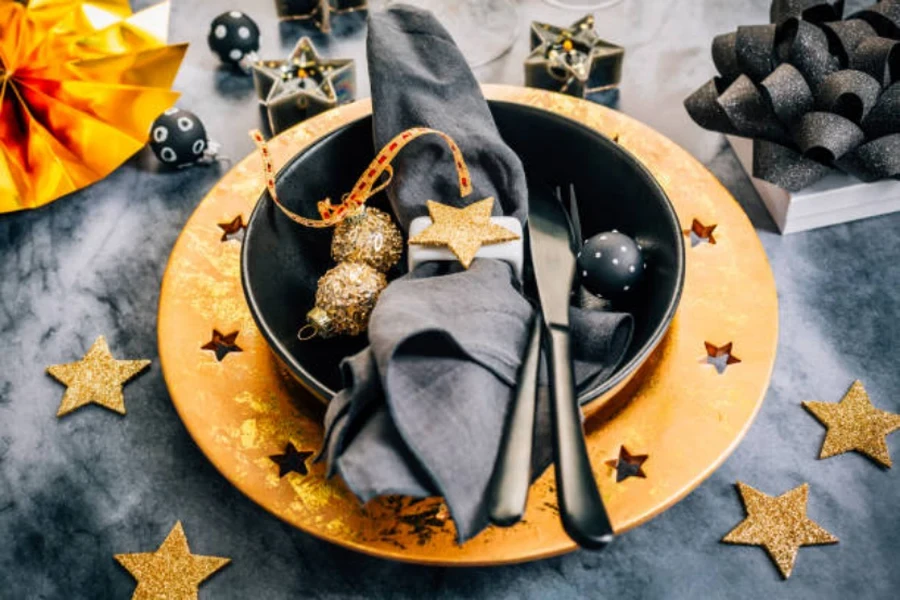
Matching color intensities is another key consideration. Pairing pastel tones with deep hues can create a jarring contrast that disrupts the visual flow of the table setting. To achieve a harmonious balance, it’s advisable to match light hues with other light hues and deeper tones with similar intensity colors. This approach ensures a cohesive and balanced aesthetic that enhances the dining experience.
The surrounding elements of the dining area, such as the color of the chairs, dishware, and centerpieces, should also be taken into account when selecting table linens. Ensuring that the napkins and tablecloths complement these elements can prevent color clashes and enhance the overall appeal of the space.
In conclusion, the aesthetic appeal and styling of cloth napkins are crucial in creating inviting and memorable dining experiences. By carefully considering color combinations, matching color intensities, and consulting with linen experts, businesses can achieve table settings that resonate with their desired ambiance and dining philosophy.
Price versus performance
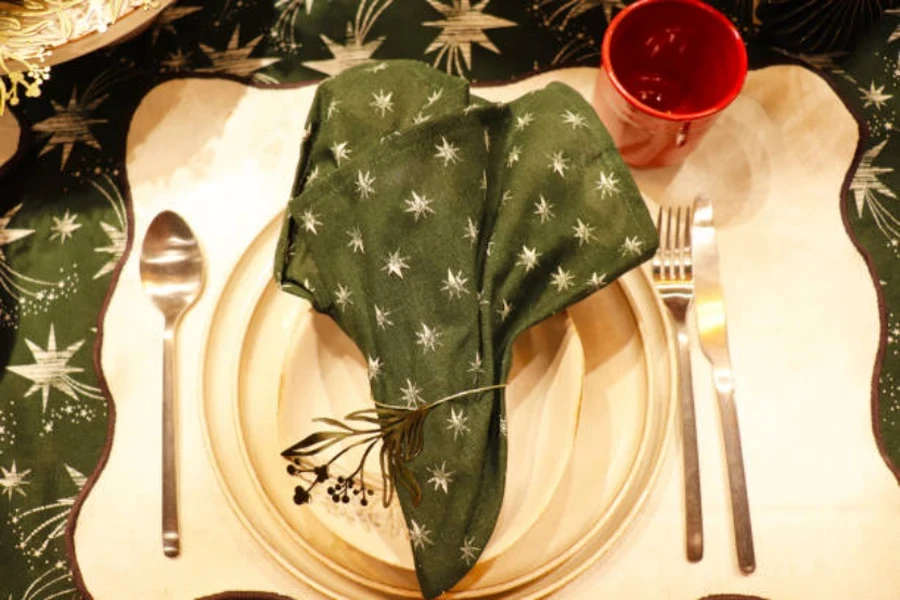
Balancing cost with performance is another crucial consideration. This involves evaluating the initial investment against the expected lifespan and appearance retention of the napkins. The aim is to achieve a harmony where the value derived over time justifies the upfront expenditure.
The cost of cloth napkins can vary significantly based on factors such as material quality, brand, and where they are purchased. For example, making cloth napkins from existing fabric scraps represents an economical option with practically no initial cost, except perhaps for the thread and the time invested in crafting them. On the other hand, purchasing high-quality linen napkins from a boutique or specialized retailer may involve a higher initial outlay, reflecting the premium nature of the material and the aesthetic appeal it offers.
The expected lifespan of cloth napkins is another critical factor in this equation. High-quality linen napkins, while more expensive, are known for their durability and can last for many years with proper care. This contrasts with cheaper, lower-quality options, which may start to show signs of wear, such as fading, fraying, or thinning, after just a few washes. Investing in durable materials like linen or high-grade cotton can lead to cost savings over time, as the need for frequent replacements diminishes.
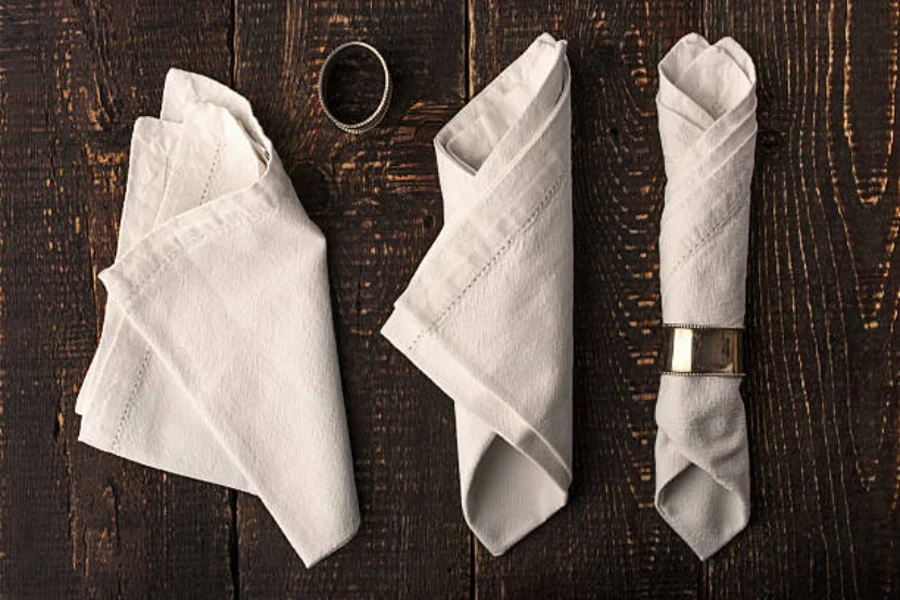
Appearance retention is also a key performance indicator. Napkins that maintain their color, texture, and structural integrity through multiple wash cycles offer greater value, as they continue to contribute positively to the dining experience without requiring early replacement. This aspect is particularly important for establishments that aim to present a consistently upscale ambiance or for individuals who value the aesthetic aspect of their table settings.
Given these considerations, the balance between price and performance hinges on selecting napkins that meet the desired criteria for durability, ease of maintenance, and aesthetic appeal. For instance, while the initial investment in a set of organic cotton or linen napkins might range from $20 to $50, depending on the source and quality, their ability to withstand frequent use and laundering could translate into a lower cost per use over time compared to disposable options or lower-quality cloth napkins.
In conclusion, the decision to invest in higher-quality cloth napkins should consider the long-term benefits of durability and appearance retention. By opting for materials and designs that align with both practical and aesthetic requirements, businesses and individuals can achieve a cost-effective balance that enhances the dining experience while optimizing the return on investment.
Top cloth napkin choices and their attributes
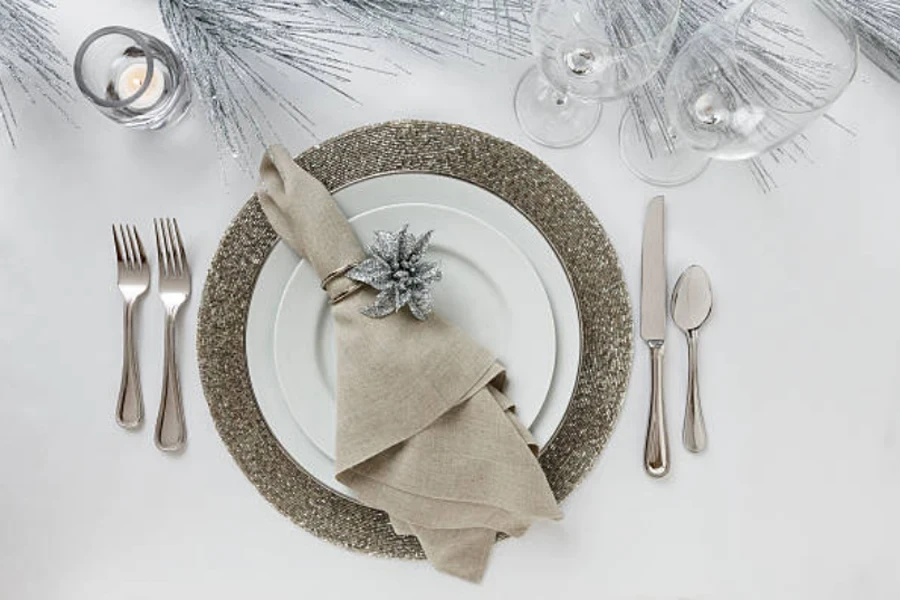
The selection of cloth napkins ranges from practical options suited for everyday use to luxurious choices designed for formal occasions, and innovative designs that set the trends for 2024. Each category offers distinct attributes, catering to the varied needs of dining establishments and individual preferences.
Leading models for everyday use
For daily dining scenarios, durability and ease of care stand as the primary considerations. Organic cotton and polyester blends are at the forefront, offering an optimal balance between environmental sustainability and practical utility. Organic cotton napkins, revered for their softness and eco-friendliness, provide a comfortable dining experience, enhancing the casual meal settings with their natural feel. Polyester blends, on the other hand, are lauded for their resilience against stains and wear, making them ideal for frequent usage. Their ease of laundering, coupled with the ability to retain color and shape over numerous wash cycles, ensures they remain a staple in everyday dining setups. These materials represent the fusion of sustainability and functionality, catering to the pragmatic needs of both commercial establishments and home settings.
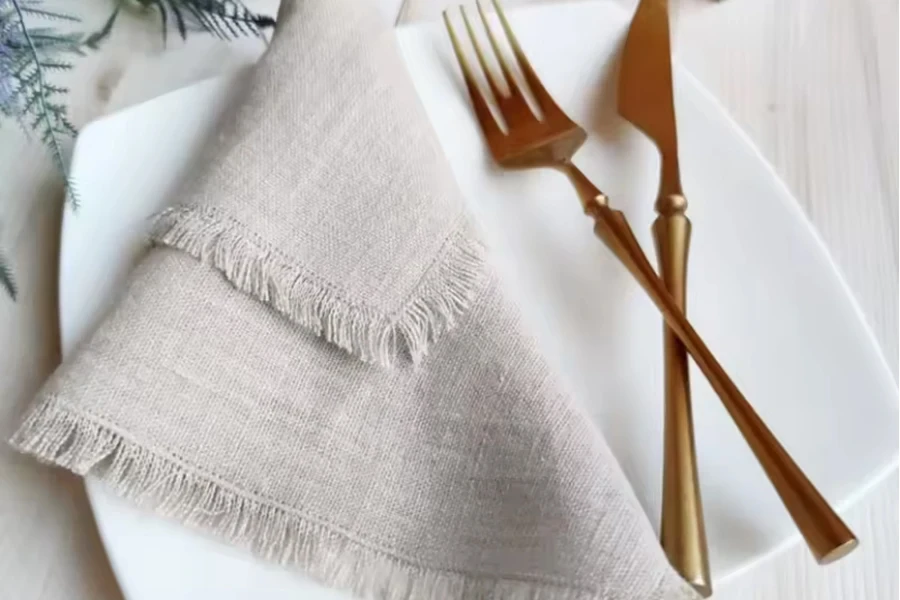
Quince Airy Gauze Napkins, Set of 4: Made from four layers of organic cotton gauze, these napkins are an embodiment of everyday luxury. Designed to withstand daily use, they are noted for their softness and ease of care, with a resistance to wrinkling that keeps them looking pristine wash after wash. Available in a palette of four versatile colors—white, fog gray, dune, and terracotta—these napkins blend seamlessly with any table setting, making them a versatile choice for everyday dining. Their dimensions are 18″ x 18″, crafted entirely from organic cotton.
Utopia Home Cloth Napkins, Set of 24: Offering exceptional value, this set provides a bulk option for those in need of a substantial quantity of napkins without compromising on quality. Made from polyester, they are praised for their thickness and durability, though some users desired greater absorbency. Available in various colors and three sizes, these napkins are a fantastic choice for large gatherings, providing both functionality and flexibility in styling. Notably, their polyester composition makes them ideal for intricate napkin folding techniques.
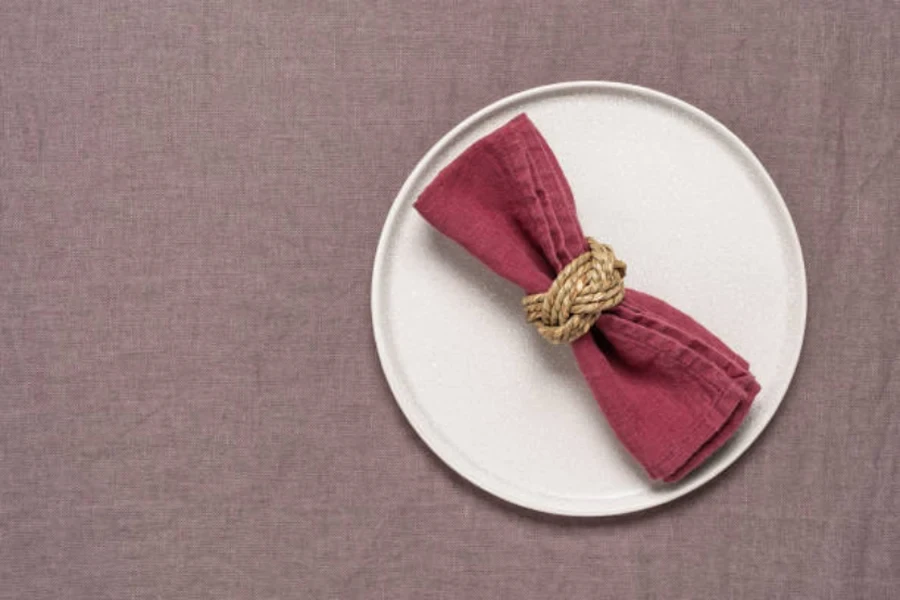
Williams Sonoma Pantry Napkins: Praised for their versatility and quality, these napkins are made from yarn-dyed, sustainably sourced cotton. They are slightly larger than average, measuring 20 x 20 inches, and are available in two colors: cream and navy. Their simple design and neutral colors make them a great starting point for any collection.
Ruvanti Cloth Napkins: This budget-friendly option does not compromise on quality. Made from a durable poly-cotton blend, these napkins are sold in a pack of 12 and come in a variety of colors. They are noted for their softness, sturdiness, and low maintenance, making them a solid choice for both daily use and larger gatherings.
Amazon Basics Cotton Blend Napkins: Offering affordability without sacrificing quality, this set of 12 napkins is made from a cotton blend, striking a balance between cost-effectiveness and functionality. While they may not be as thick or absorbent as more premium options, they boast wrinkle and fade resistance. Available in a wide array of colors, these napkins allow for customization of table settings for different occasions. Their machine washability adds to their appeal for those transitioning to cloth napkins on a budget.
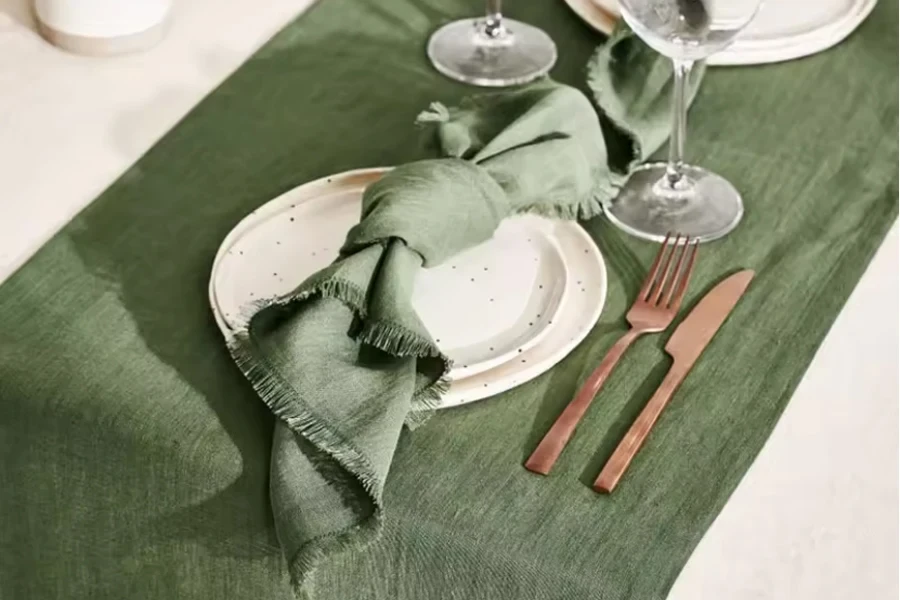
Crate & Barrel Smooth Cloth Napkins: Recommended for their color variety and cost-efficiency, these napkins boast 10 different shades, ranging from light to muted to dark tones. Though they are on the thinner side, their mitered corners and crisp seaming offer a polished look. Sold individually, these 100% organic cotton napkins allow you to purchase the exact number you need, providing flexibility for household or event planning.
Anthropologie Boho-Chic Napkins: For those with a penchant for bohemian style, these napkins come in a set featuring mismatched patterns in bright shades or specific colors like blue or neutrals. Beyond their fun print, these cotton napkins are durable, absorbent, and easy to clean, making them as functional as they are stylish. They are machine washable, though care should be taken to prevent shrinkage.
Premier options for formal occasions
When the occasion calls for an elevated sense of elegance and sophistication, luxury linen napkins take center stage. Renowned for their exquisite texture and unparalleled softness, linen napkins embody the essence of luxury dining. Their natural luster and graceful drape add a touch of opulence to formal table settings, making them a preferred choice for weddings, gala dinners, and upscale restaurants. The inherent qualities of linen, such as high absorbency and durability, further enhance their appeal, providing not only aesthetic pleasure but also practical longevity. The selection of linen napkins, often available in a range of refined hues and intricate patterns, allows for precise alignment with the thematic and color schemes of sophisticated events, underscoring the meticulous attention to detail that defines premium dining experiences.

Material Kitchen The Linen Napkins, Set of 4
Crafted from stone-washed linen for unmatched softness, these napkins elevate any dining occasion with their sophistication and elegance. Available in fashionable colors such as jade, sage, sienna, mocha, flax, and sable, they promise to spark conversations and admiration at the table. The option to purchase these as part of a larger set, including double-sided placemats, offers a comprehensive solution for creating a cohesive and stylish tablescape. Each napkin measures 18″ x 18″ and is made from high-quality linen.
Williams Sonoma Hotel Dinner Napkins, Set of 12
These cotton dinner napkins are the epitome of elegance, designed to complement the most special of occasions. Available in a range of sophisticated colors, they offer the perfect backdrop for weddings, birthday parties, and other celebratory events. The option to personalize the napkins with a name or monogram adds a unique touch, making each piece feel even more special. Machine washability ensures they can be reused for multiple events, making them not only beautiful but practical. Each napkin measures 20″ x 20″ and is crafted from premium cotton.
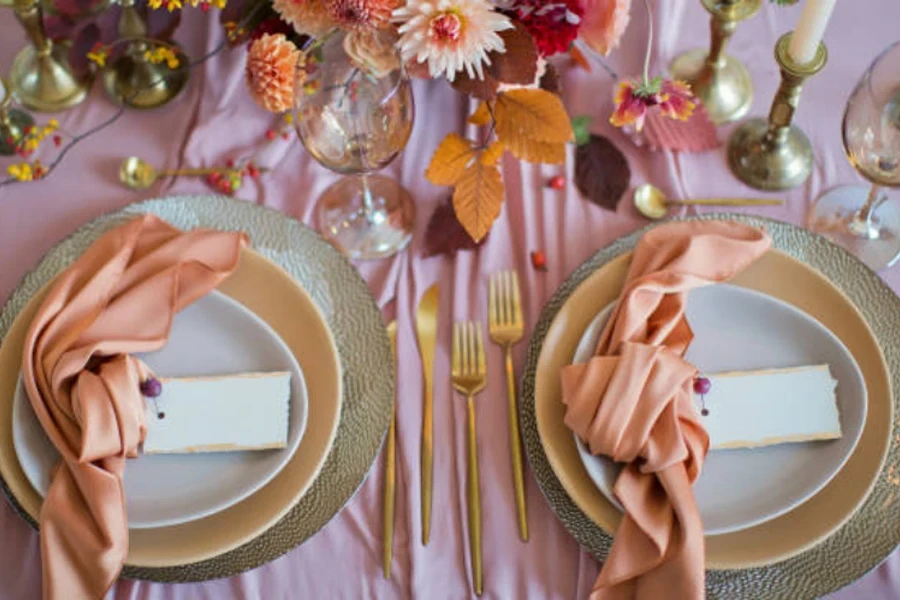
Williams Sonoma Textured Napkins: These linen napkins are known for their rich texture and are available in 10 stunning colors. Made by a family-owned company in Italy, they combine luxury with functionality. Despite their higher price, the pre-stonewashed fabric ensures they’re soft with a light crinkle, eliminating the need for ironing. They are machine washable, offering easy care despite their upscale appearance.
Aspen Napkins by Crate & Barrel: Ideal for special occasions, these napkins offer a smooth, fine-dining feel. Made from 100% cotton, they are available individually or in sets of eight, allowing you to easily stock up as needed. While their thin material and un-reinforced hems may not suit daily use, they excel in formal settings.
Neiman Marcus Matouk Cloth Napkins: For those seeking luxury, Matouk’s napkins stand out with their exquisite linen fabric and elegant satin stitch border. Available in five colors, the napkins are made from Polish linen and are machine washable, although they may require ironing to maintain their sophisticated appearance. Despite their higher price point, their quality and aesthetic make them a worthwhile investment for upscale dining experiences.
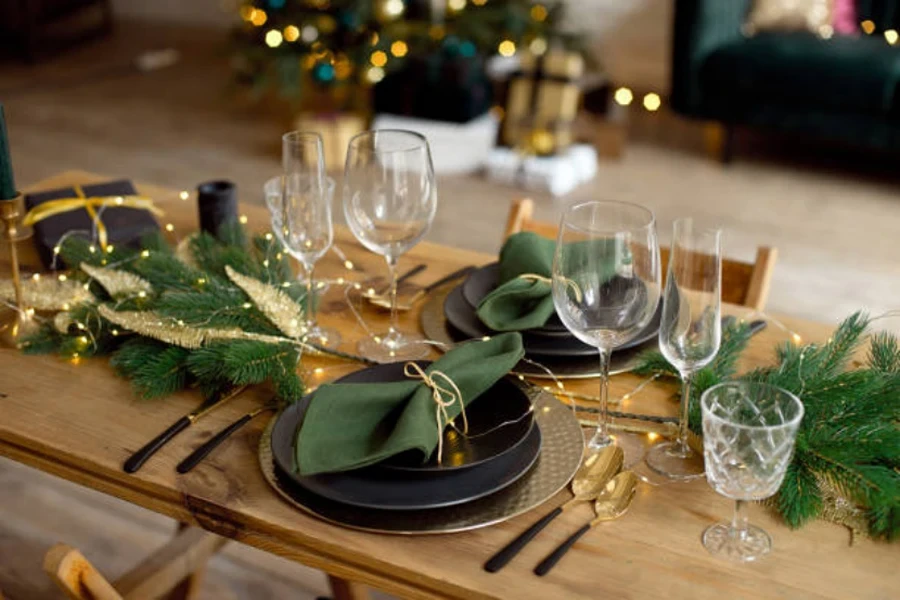
Food52 Cotton Napkins: These napkins are noted for their linen-like appearance and texture, thanks to a special slub weave. With stitching and color options that lend a modern touch, they are ideal for those looking to add a contemporary flair to their table. While the price may add up for those needing a larger quantity, the napkins’ machine washability and durability make them a practical choice for everyday use as well as special occasions.
Innovative designs for 2024
The year 2024 heralds the arrival of innovative designs in the realm of cloth napkins, marked by a vibrant interplay of colors, patterns, and personalized options. As dining establishments and consumers alike seek to infuse their table settings with individuality and flair, the demand for custom-designed napkins rises. This trend encompasses a wide spectrum of possibilities, from bold and eclectic prints that capture the vibrancy of modern aesthetics to subtle and intricate motifs that resonate with understated elegance. Personalized napkins, featuring monograms, logos, or bespoke artwork, offer an avenue for creating unique dining experiences, enabling establishments and hosts to imprint their signature style onto their tablescapes. The exploration of new fabrics and eco-friendly materials further enriches this segment, aligning with the growing emphasis on sustainability and innovation in dining accessories.
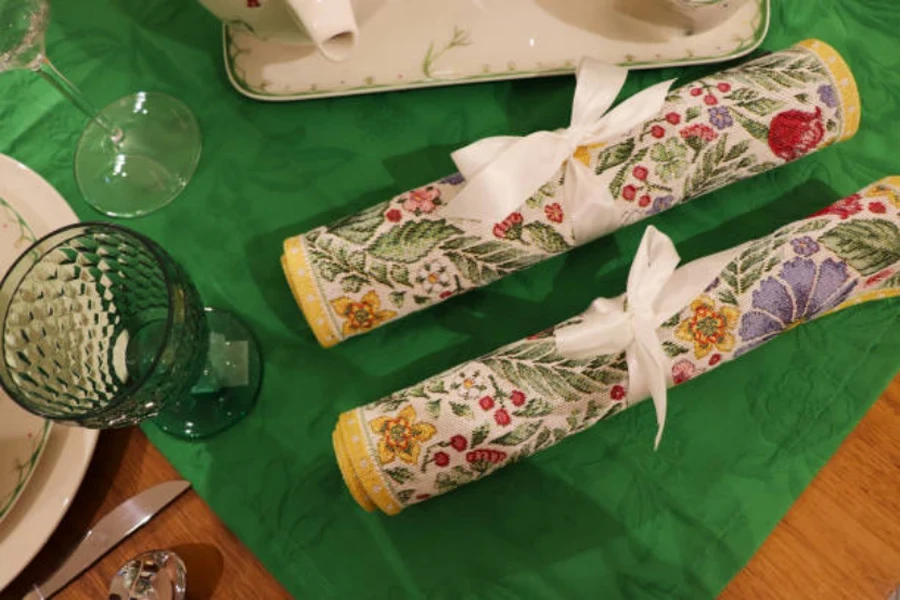
Ichcha Organic Cotton Napkins: Highlighting artisanal craftsmanship, these napkins are handwoven and hand-dyed using natural dyes, featuring a beautiful block print in mustard. The organic cotton material and the attention to detail in their creation make these napkins a joyous addition to any table. They are produced by a family-run business that emphasizes giving back to its artisans and charity.
Amazon Watercolor Floral Napkins by Maison d’ Hermine: These cotton napkins feature a delicate watercolor floral design inspired by the town of Colmar in France. Available in various floral patterns, they offer a soft and charming touch to your dining table. Though they may require careful washing to maintain their shape and design, they are machine washable for convenience.
Each of these cloth napkins exemplifies the blend of functionality and style that modern consumers seek in cloth napkins, whether for daily dining, budget-conscious bulk purchases, upscale gatherings, or once-in-a-lifetime celebrations. Whether through the everyday reliability of organic cotton and polyester blends, the refined elegance of luxury linen, or the creative allure of innovative designs, the choice of napkins significantly contributes to the ambiance and aesthetic appeal of dining experiences.
Conclusion
Selecting the right cloth napkins is a testament to a commitment towards both elegance and environmental sustainability in dining experiences. With the array of choices available in 2024, from everyday durable options to luxurious designs for special occasions, and innovative, eco-friendly materials, businesses can cater to diverse consumer preferences while enhancing the aesthetic appeal of their table settings. This careful consideration not only elevates the dining atmosphere but also supports sustainable practices, marrying form with function in a manner that resonates with contemporary values.
